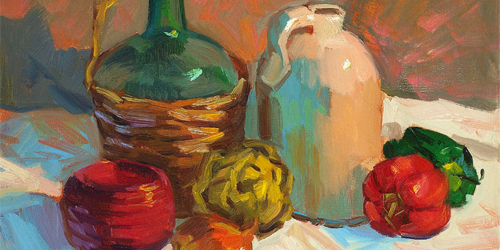As a culinary commodity, bell peppers are known in their dried form including chili pepper and paprika. Fruits are used in salads, filling or baking, added to soups and stews, dried and used as cooking seasonings or pickled, while leaves make a good spinach dish.
Bell pepper is the most popular and widely used condiment in the world. Bell peppers are heavily pickled in salt and vinegar. Color and flavor extracts can be used in the food and feed industries, such as ginger beer, hot sauce and poultry feed, and certain medicines. Sweet, non-irritating peppers are widely used in immature, green ripe or ripe mixed vegetables, especially in temperate regions. Sweet bell pepper extracts show promise against some crop pests.
Bell peppers are a great source of vitamin C. The vitamin C content of green bell peppers is twice that of citrus fruits, and this powerful vitamin C is an antioxidant that can effectively prevent certain cancers. Meantime, bell peppers are the source of β-carotene.
Red bell peppers are just ripe green bell peppers. As bell peppers age, their taste becomes sweeter and milder. The vitamin C of red bell peppers is three times that of green varieties. Meantime, Red bell peppers contain 11 times more β-carotene than green bell peppers. Bell peppers are also an excellent source of dietary fiber and provide small amounts of several other vitamins and minerals.
In addition to being used as food and food additives, the fruits of sweet peppers have also been grown on a large scale and used as medicines for the digestive system, blood system, muscle/skeletal and skin applications. According to reports, it has also been used by some tribal people in arrow poison, such as the Dak in Borneo and the Yuri Tapocas in Brazil. The commercial use of this species in skin cosmetic products was recently reviewed in a toxicological risk assessment, and it was found that the ingredient formulation is safe for humans.
Ornamental bell peppers can reach a height of 25 to 50cm and can be grown as annual plants or potted plants to produce colorful fruits. In warm climates, ornamental bell peppers are perennials, good bedding plants in hot weather conditions, and perform well in mixed flower borders, edging or containers. Most varieties used for ornamental purposes keep the peppers in an upright position above the leaves.
References
“Bell and Chili Peppers”. Agricultural Marketing Resource Center, US Department of Agriculture.2018
“Bell and chile peppers” (PDF). US Western Institute for Food Safety and Security. 2018
Britton NL. Flora of Bermuda. New York, USA: Charles Scribner’s Sons. 1918
Chemical food safety. Brimer, L. 2011
“Capsicum annuum (Grossum Group) (Bell Pepper, Red pepper, Sweet Pepper) | North Carolina Extension Gardener Plant Toolbox”. plants.ces.ncsu.edu. Retrieved. 2020
Paprika: A Spicy Memoir from Hungary;Joanne Sasvari. 2016
USDA-NRCS. The PLANTS Database. Baton Rouge, USA: National Plant Data Center. 2014
“Vegetable of the Month: Bell Pepper”. CDC Fruit & Vegetable of the Month. 2012





